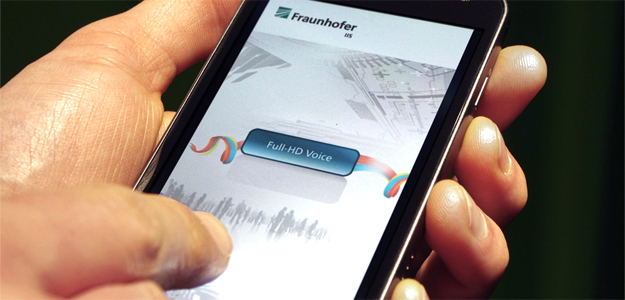 You may not be familiar with the name Fraunhofer, but you’re definitely familiar with its work. It’s a large research organization that has been at the forefront of many of the technological advancements that we enjoy today. Listing the non-profit’s full list of achievements would be too extensive to fit here, but to give some perspective: If you’re watching a Blu-ray, a YouTube video, or a 3D television, if you’ve listened to a song today in .mp3 or .AAC format, or if you’ve connected to the Internet via a LTE network, you’re utilizing research conducted by the folks at Fraunhofer.
You may not be familiar with the name Fraunhofer, but you’re definitely familiar with its work. It’s a large research organization that has been at the forefront of many of the technological advancements that we enjoy today. Listing the non-profit’s full list of achievements would be too extensive to fit here, but to give some perspective: If you’re watching a Blu-ray, a YouTube video, or a 3D television, if you’ve listened to a song today in .mp3 or .AAC format, or if you’ve connected to the Internet via a LTE network, you’re utilizing research conducted by the folks at Fraunhofer.
Being the organization that invented both .mp3 and .AAC, Fraunhofer knows a thing or two about sound quality. When the idea of HD Voice was announced, the teams at Fraunhofer IIS (Institue for Integrated Circuits) and Fraunhofer USA were shocked. In the eyes of the researchers at the institute, the idea of HD Voice is a scam – not because it isn’t an improvement, but because it isn’t nearly enough of one. Standard phone calls take place on an audio bandwidth of up to 3.4KHz. HD Voice, using the Adaptive Multi-Rate (AMR) waveband speech codec, bumps calls up to 7KHz. HP Baumeister, one of the researchers at Fraunhofer, describes this as a “timid step” at best. He believes he can do better, and is more than willing to prove it.
Baumeister had a long list of shortcomings that is produced by HD Voice, most of which stems from the codec it uses. HD Voice is designed specifically for for speech, which would seem perfect for a phone call. The problem is, your voice likely isn’t the only thing that can be heard during a call. Background noises of all kinds, from music to environment, will exist no matter what. In Baumeister’s words, the limitation of speech codecs come because they “absolutely must have voice suppression,” which means “the codec cannot deal with it [if it’s not voice].” It also requires a licensing fee to use, adding a cost to the provider and potentially the consumer.

His solution? A project of Fraunhofer research: Full-HD Voice. While the name doesn’t differentiate the service that well (these guys are tech geniuses, not marketers after all), Baumeister believes the quality speaks for itself. Using the VoIP technology that we are inevitably moving toward, Full-HD Voice takes avantage of codecs designed for all sorts of audio to deliver a higher quality call experience. Improving quality to between 14KHz and 20KHz, it produces calls with the full audible spectrum. There are a total of five AAC codecs, which you’ve likely used in the past. AAC-LD is a standard in video conferencing, while AAC-ELD is the codec of choice for Apple’s FaceTime. The full AAC offering is compatible with Android 4.1 and up, AAC-ELD is present in both Android and iOS. This is the technology that powers Full-HD Voice, conveniently already available within the two most popular mobile operating systems around – no additional licensing or royalties required.
What does all this mean? Your phone is likely already capable of carrying out high quality audio conversations with sound comparable to that of a CD. Baumeister believes this can be done without increasing the bit rates of today’s phone services. The AAC-ELD codec actually achieves higher audio quality with a lower bit rate, making it for a better and more efficient conversation.
It’s crazy to think of all the advancements our phones have gone through over the past decade, the one part of that hasn’t improved is the actual call quality – You know, the thing the phone was invented for. For comparison’s sake, imagine TVs develpoed to the point they are now, big screens and thin frames, but we still watched films on VHS. You have a piece of technology in your pocket that is so advanced that it can outthink the computers that put a man on the moon. Why spend all your time on it asking people to repeat what they said or holding your arms at odd angles like rabbit ear antennas in hopes of getting better call quality?
Everything is in place for Full-HD Voice to be utilized as the standard mobile communication. It’s capable of being used cross-platform to complete audio conversations from Android to iOS devices. We just need some clever app creators to get going on making this a reality. Make our lives easier, app devs.
Learn more about Full-HD Voice and get a demo of the quality it offers and find out more about Fraunhofer’s creation here.


